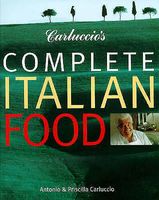Advertisement
Polenta
Porridge
By Antonio Carluccio and Priscilla Carluccio
Published 1997
In Roman times polenta was a porridge made from the flour of various grains and pulses, such as broad beans, spelt, etc. Today the name usually refers to a porridge of yellow or white maize flour. Polenta can, however, be used to describe any type of porridge as long as the grain or pulse of origin is used to specify what it is made from, i.e. polenta di fagioli (bean polenta) etc.
Polenta is best made in a copper pan by cooking the maize flour with water until it achieves a fairly solid consistency. It takes about 40 minutes to cook, depending on the coarseness of the grains, and requires constant energetic stirring to prevent it from sticking to the bottom of the pan. The polenta can then be poured on to a wooden board and served in the middle of the table, where everyone can take as much as they like. It is usually eaten with a meat, mushroom or vegetable ragù. Polenta, usually eaten as a substitute for bread, can be eaten cold or hot, or cut in slices and fried. It is also popular layered with cheese and a tomato sauce to make pasticcio, a sort of timbale.



